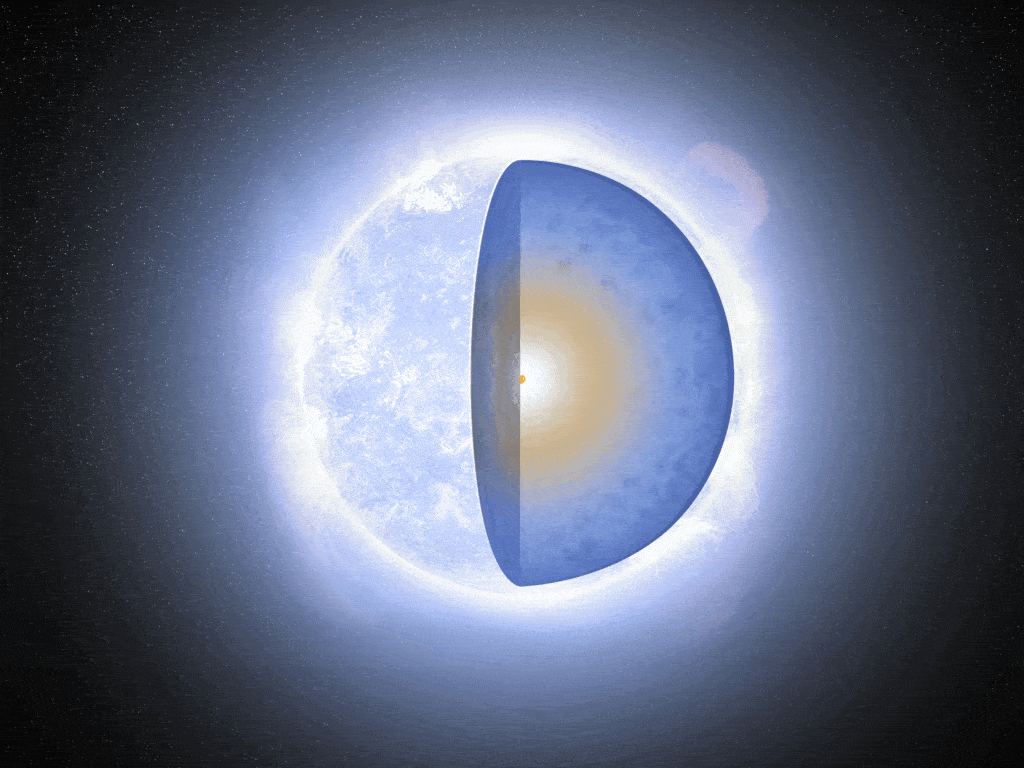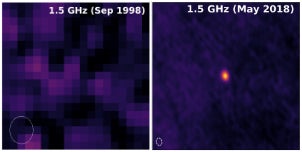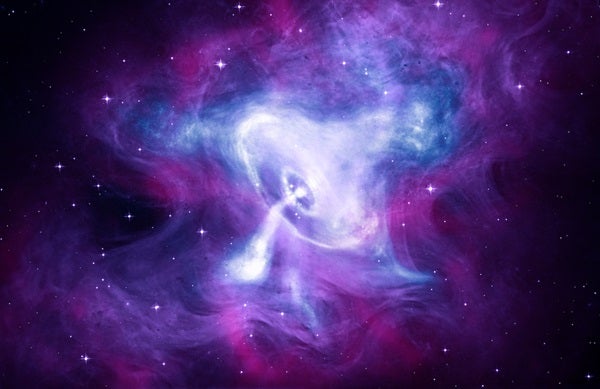Key Takeaways:
- Astronomers discovered a very young and powerful pulsar, VT 1137-0337.
- It is estimated to be only 14 to 80 years old and located 395 million light-years away.
- The pulsar is hidden behind a debris shell from its supernova birth but is now emerging.
- VT 1137-0337 is 10,000 times more energetic than the Crab Nebula pulsar and might be a ‘super Crab’.
- The strong magnetic field around VT 1137-0337 suggests it could be a magnetar, a different type of neutron star.

In a far-off galaxy, astronomers believe they may have discovered the most powerful pulsar to date.
The neutron star, which spins quickly and is made of the dense parts of a massive star, is just starting to emerge from the supernova remnant that gave rise to it. VT 1137-0337 was first observed in 2018 by the VLA Sky Survey, a seven-year project that images 80 percent of the night sky. The fact that the pulsar was absent from a previous Very Large Array (VLA) photo from 1998 suggests that it is also among the newest neutron stars discovered to date. It could be as young as 14 years old, but estimates place it no older than 60 to 80 years.
Lead author Dillian Dong, a graduate student at Caltech, presented the discovery at the 240th meeting of the American Astronomical Society (AAS) in Pasadena, California.

Metamorphosis
This neutron star is located within the dwarf galaxy SDSS J113706.18-033737.1, which is undergoing a burst of star formation, and is approximately 395 million light-years away. With a mass equivalent to approximately 100 million Suns, the galaxy distinguished VT 1137-0337 from the other 20 bright, transient objects in the data.
The baby neutron star was hidden behind a shell of debris when the massive star that gave birth to it burst into a supernova at the end of its life. However, VT 1137-0337’s strong magnetic field swept through the surrounding particles, accelerating them to almost the speed of light and producing strong radio emissions, much like a butterfly emerging from its cocoon.
“[This] ultra-dense object has basically the mass of the Sun, crammed into a [space] the size of a city,” Dong explained. “When you cram so much material into such a small space, you amplify the magnetic field…[meaning] you have a huge amount of magnetic energy concentrated in this object.” And this pulsar wind nebula was formed when that energy burst, inflating a bubble in the gas left over from the supernova.
Before now, the “star guts are basically too dense,” said Dong, absorbing all the radio light from the pulsar within. Eventually though, the nebula is visible through the supernova’s transparency.
Reigning monarch
The Crab Nebula, the most well-known example of a pulsar wind nebula, is much closer to home for the researchers who are measuring the energy of VT 1137-0337.

The Crab, which is still visible to observers today, is the remains of a supernova that erupted in the night sky in 1054.
“The object we have found appears to be approximately 10,000 times more energetic than the Crab, with a stronger magnetic field,” Dong said in an accompanying press release. “It likely is an emerging ‘super Crab’.”
However, the strength of the magnetic field surrounding this VT 1137-0337 has the researchers wondering if it is a magnetar, a different class of neutron star.
The strongest magnetic fields in the universe are found in magnetars, which are neutron stars. Their magnetic fields are between 100 and 1,000 times stronger than a pulsar’s, and they are roughly a thousand trillion times stronger than Earth’s.
Even so, Dong says that VT 1137-0337 would still be “extremely exciting” because it would be the first time that astronomers have ever witnessed a magnetar appear.


